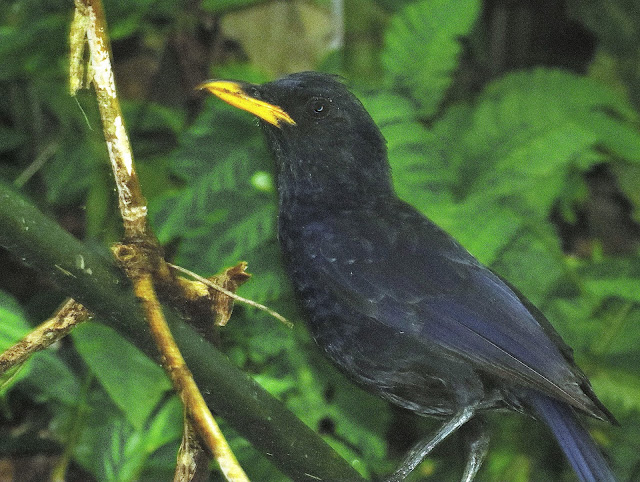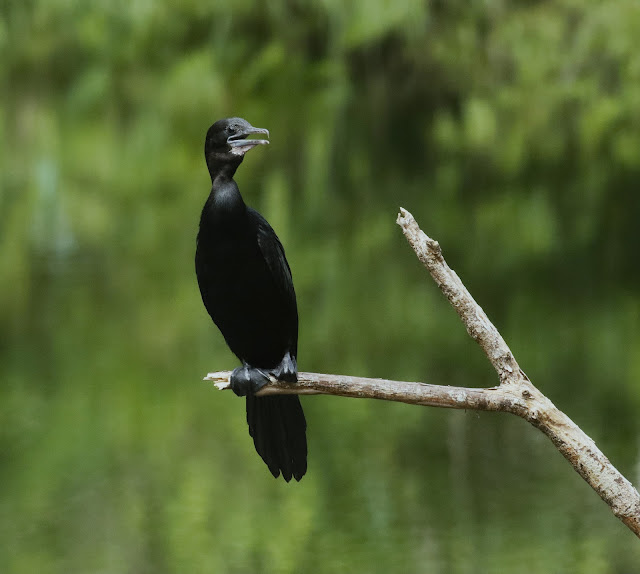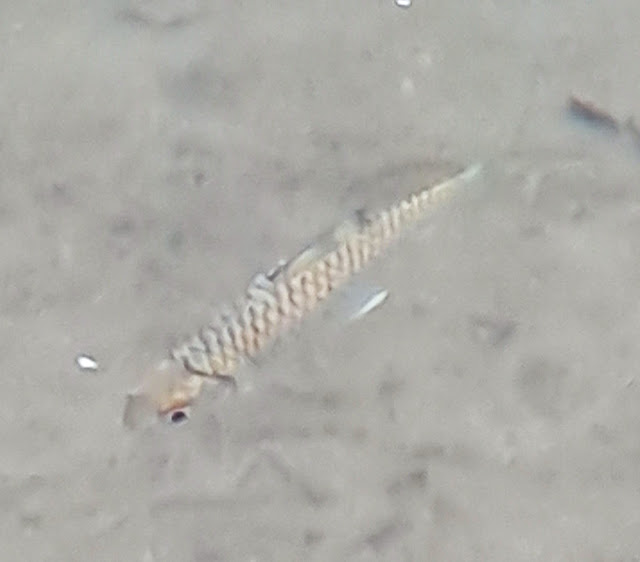Blue Whistling Thrush (Myophonus caeruleus) is quite a large thrush. It's about the size of a Hill Myna (Gracula religiosa) - about 31cm / 11 inches and probably more common than the Malayan Whistling Thrush (Myophonus robinsoni). There are quite a number of research papers out there on the Blue Whistling Thrush. One of the latest was published as recent as in 2024 by Zhengfeng Yuan et al titled "Complete Mitochondrial Genome and Phylogenetic Analysis of the Blue Whistling Thrush (Myophonus caruleus)". There is also another interesting article which explained the differences between those two Thrushes. It was co-written by none other than our own local birders led by Dave Bakewell et al (2010), titled "Malaysian Whistling Thrush Myophonus robinsoni - Field identification, distribution, and conservation concerns".
Recently I came across a Blue Whistling Thrush at a famous limestone cave in the state of Perak. This time it was quite a different encounter as this individual showed some unusual behavior and I also manage to witnessed its feeding episodes.
As I was casually exploring at the fringes of the cave, suddenly this 'black' bird flew down and landed just a few feet away from me. It tried to hide itself between a few leaves hoping that I can't notice it. It reminds me of a recent viral photo of a juvenile elephant trying to hide itself near a pole. 😂
Happily watching the behavior of the Blue Whistling Thrush is this Little Cormorant (Microcarbo niger)
I doubt it can get any fishes here.
Little Cormorant (Microcarbo niger)
I think I spoke too soon.
There were actually fishes in a nearby stream. Here you can see four different types of fishes.
Initially I thought this could be a 'Tengas' but a more experienced 'fisherman' says it's a 'Tebal Sisik' - Blunt Snout Barb (Mystacoleucus obtusirostris).
THAT'S ALL FOR NOW FOLKS !











